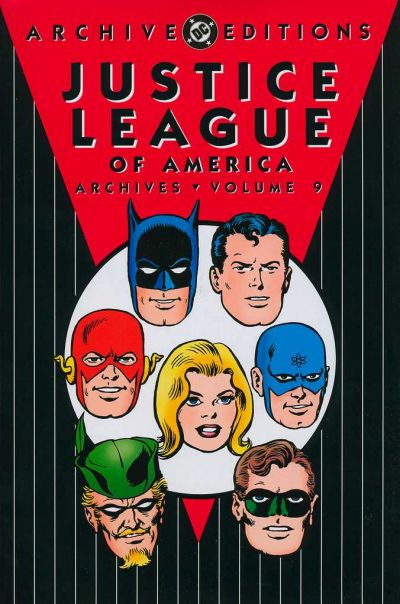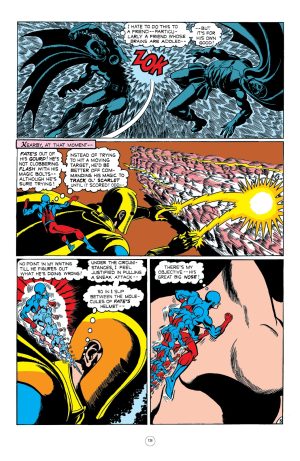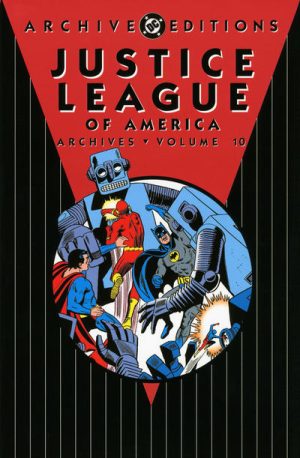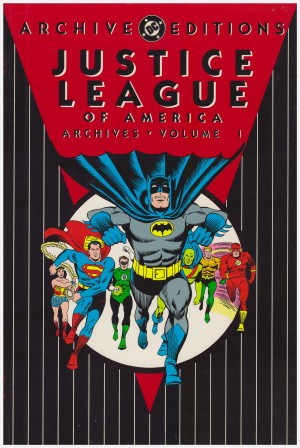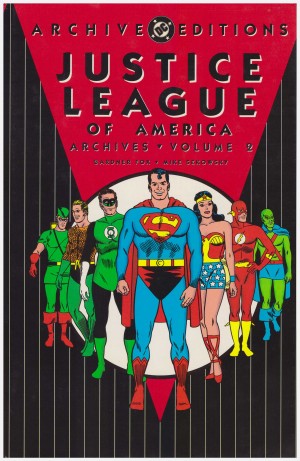Review by Frank Plowright
Nowadays any new writer taking on a long-running feature has discussions with the editor outlining a short term and medium term direction and ideas for the series. That’s not the way it used to be, and it can frequently be seen that a writer whose work was eventually highly regarded only produced lacklustre material at first. Having a few issues of Justice League of America under his belt, does this selection of Denny O’Neil’s work from 1969 and 1970 read any better than his stories in Volume 8?
It’s possible to run through a list of headline events that would suggest that’s the case. O’Neil explains why Martian Manhunter hasn’t been seen for a long time, and writes him out of the series. There’s finally an acknowledgement that Hawkgirl exists, and a tragic death prompts Black Canary to replace Wonder Woman in the JLA. The JLA are betrayed by one of their own, this time genuinely, at the behest of a surprise villain, and they move from a cave into their new orbiting satellite headquarters. It’s certainly progress, but the sensational events occur within such dreary stories.
O’Neil recognised why the JLA had become mired in the past, and his application of personalities to the cast is better than in Volume 8, but in attempting to make the team contemporary he throws out the good along with the bad. These stories are no longer fun. If it’s not people facing tragedy or dying, O’Neil’s haranguing readers with humanity’s problems and stupidity. Credit is due for highlighting air pollution in 1970, but O’Neil’s also has the almost exclusively male JLA membership patronising Black Canary at best. The Justice League demands widescreen drama and action, and O’Neil pits them against a guy in a spacesuit, evil counterparts (again) and an alien in a hoodie.
Dick Dillin would pencil JLA for years, and eventually settled into a shorthand style not improved by unsympathetic inking, but near the start of his run on these stories he’s putting in a lot of effort. The cast leap off the page in stylishly conceived layouts, and as inked by Sid Greene and Joe Giella those layouts are given maximum impact.
Is there anything here that stands up? Well, a two-part story guest starring the Justice Society has the novelty of a depressed alien’s mood swings producing an unpredictable threat, some creative consequences and a tragic ending. However, even that’s flawed by an opening in which the Red Tornado crosses dimensions to warn the JLA that their Justice Society friends are in danger, but they ignore him for two weeks.
All these years later the material remains so dull that the editors don’t seem to have realised the selection ends in the middle of a two part story, so the conclusion is supplied in Volume 10, while the first volume of Justice League of America: The Bronze Age Omnibus picks up with the second half of this collection. It’s also available in black and white as part of Showcase Presents Justice League of America Volume Four.
